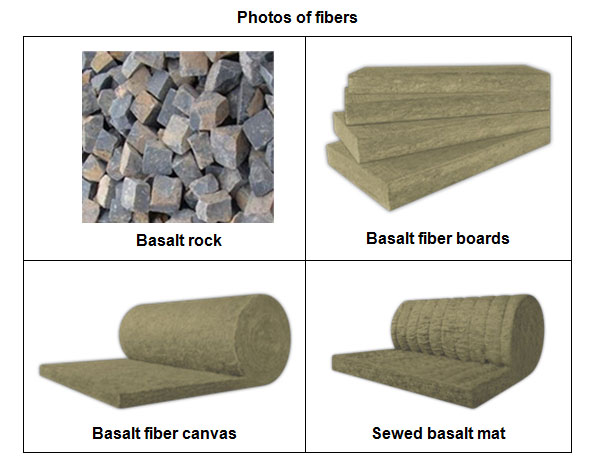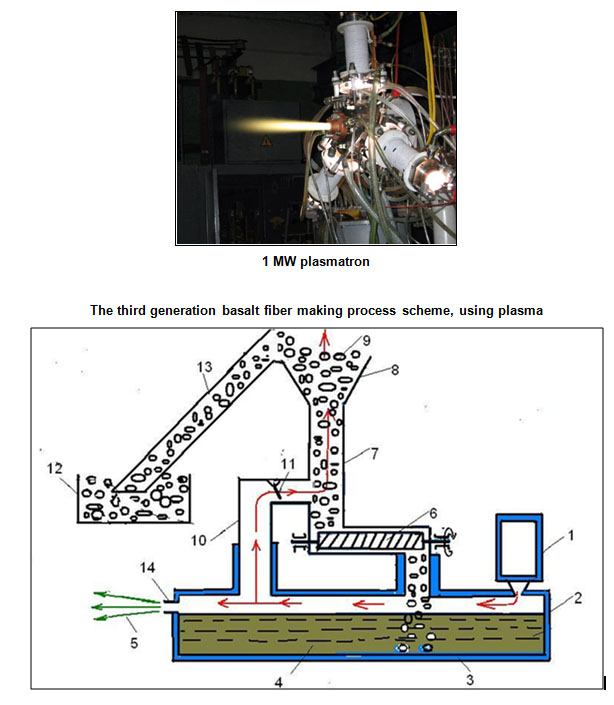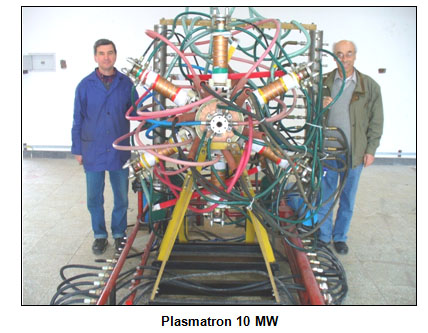Plasma technology for basalt fibre production
GoodRich offers 100% basalt fibre mat & board making plant from Russia, using the new plasma melting & blowing technology.
Basalt is a volcanic rock. Pure basalt insulation is considered to be the best among all the thermal & sound insulation materials, as it has extremely low thermal and noise conductivity. It has superior properties when compared to glass wool, rock wool or mineral wool.

Pure basalt fibers can be used for high-temperature applications (up to 900°C). They have a very high life time (more than 50 years).
For making basalt fibers, the traditional technologies are duplex method or centrifugal method. These methods need very high investments and the fiber thicknesses are high, i.e., 16-21 microns in diameter.
The duplex process also needs natural gas for gas-electric furnace. In the duplex process, expensive platinum dies are used for drawing thin fibres & cast iron dies are used for making thick fibres. In the absence of natural gas, high frequency induction furnace is used for making thick fibres, where the power consumption is 5-6 kWh per kg of basalt fibre. The duplex process has substantial disadvantages such as low overall productivity, high specific power, etc.
The centrifugal method for wool production also has several major disadvantages. In the centrifugal device, fine basalt stones are formed, which deteriorate the quality of wool. The device gets blocked once in 3-7 days and needs to be cleaned.
The plasma technology can make super thin basalt fiber, with a fibre diameter of 1-2 microns and a length of 40-60 mm. These super thin fibers have 2 times better insulation properties than thick fibres. Furthermore, super thin fibers can be held in a canvas by intermolecular forces that eliminate the use of binders.

| 1. Plasmatron | 8. Bunker |
| 2. Crucible for melting the basalt stones | 9. Basalt charge |
| 3. Water cooling of the crucible | 10. By-pass channel for pre-heating the basalt charge |
| 4. Molten basalt lava | 11. Slide valve to distribute the gas flow |
| 5. Fiber blowing by plasma gas | 12. Reservoir for basalt stones |
| 6. Screw feeding of basalt stones | 13. Conveyor |
| 7. Gas flowing in the pre-heating area | 14. Nozzle for blowing out the basalt fibers |
Plasma technology for the production of basalt wool is based on the use of plasmatron to produce a stream of high-temperature gas. In a special device (water-cooled crucible), the stream of hot gas from the plasmatron initially melts the basalt stones & the resulting melt flows through a nozzle. The air velocity reaches near sonic (up to 200 metres per second), which inflates the molten stream of basalt & results in the formation of super thin & relatively long fibers, which come out at a very high velocity.
Comparison of thermal conductivity of different materials –
| Material | Thermal conductivity, W / m*K | Material | Thermal conductivity, W / m * K |
| Copper | 380 | Hollow brick | 0.44 |
| Aluminum | 230 | Hardwood | 0.20 |
| Steel | 52 | Rubber | 0.15 |
| Reinforced concrete | 1.7 | Mineral wool-thick | 0.055 |
| Stone | 1.4 | Expanded polystyrene | 0.040 |
| Glass | 1.15 | Basalt fibre | 0.038 |
| Solid brick | 0.67 | Basalt super thin fibre | 0.035 |
Note: Lower thermal conductivity = better heat insulation.
Table of sound absorption co-efficiency of various materials –
| Material | Sound absorption co-efficiency at 1000 Hz |
| Concrete wall | 0.015 |
| Brick wall | 0.032 |
| Wooden wall | 0.06-0.1 |
| Acoustic fiberboard | 0.45-0.50 |
| Glass fiber | 0.80-0.92 |
| Basalt fiber | 0.80-0.95 |
| Super thin basalt fiber | 0.95-0.99 |
Note: Higher sound absorption co-efficiency = better sound insulation.
The investment on 8,000 tons per year pure basalt fiber making plant using the new plasma technology is only 2-3 million US Dollars, as against 8-10 million US Dollars for using the present technologies. The plasmatron needs 1-2 MW power. There is no need for natural gas or any other heat source. The temperature of plasma will reach 3,000°C or even more, which is enough for melting the basalt stones and for overheating the melt.
The cost of production of 100% pure basalt fiber is only USD 500 per ton in the plasma technology. Pure basalt fiber products are presently sold at USD 1,500 per ton. The project is highly profitable, with a pay-back period of 1 year.
For developing an industrial installation based on the described plasma technology, a 10 MW six-arc plasmatron can also be used, which is manufactured and tested (see the photograph below)-

This plasmatron will produce up to 80,000 tons of basalt fiber per year.
